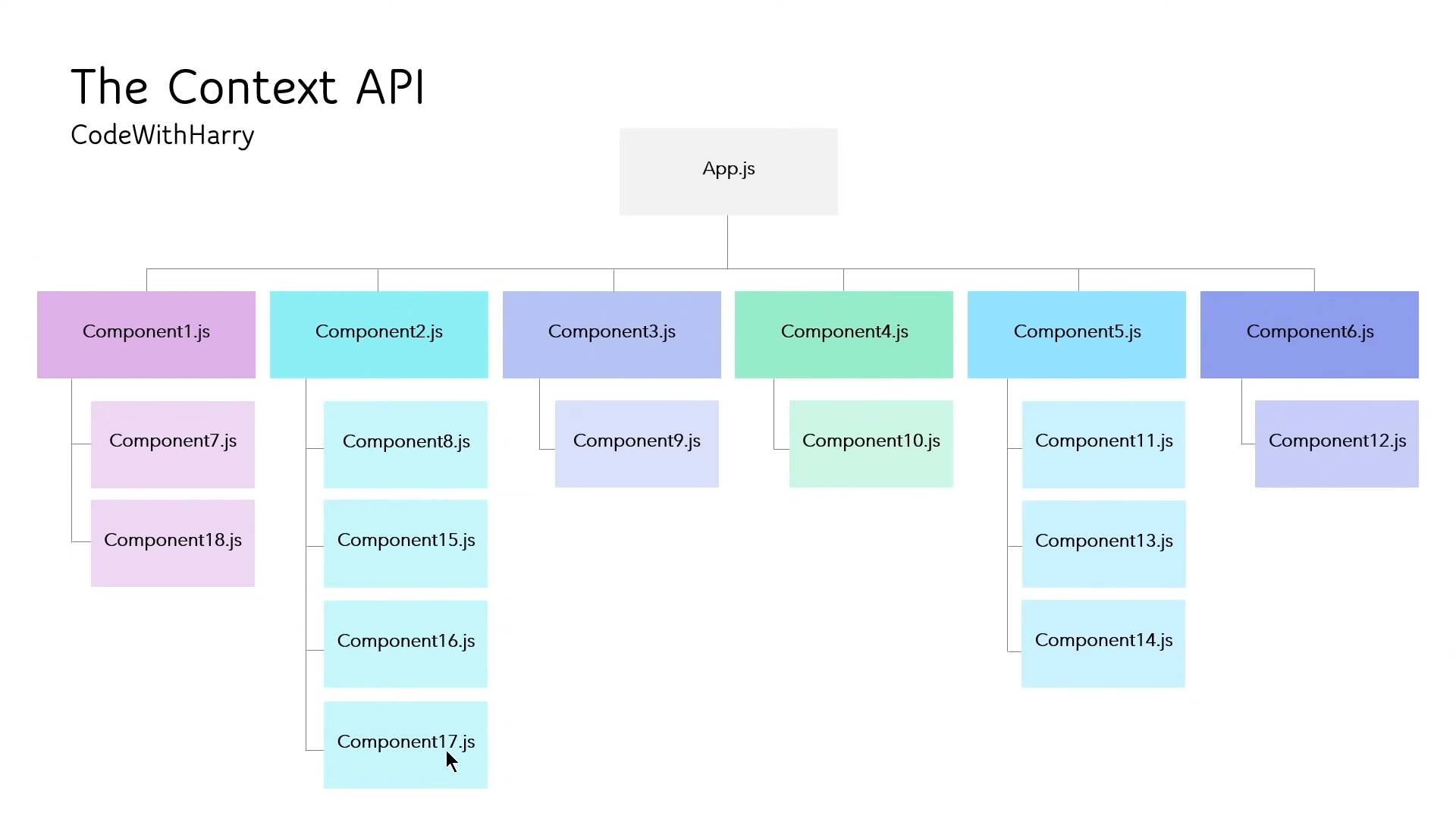React useContext
useState is a Hook that lets you add React state to function components. useContext helps to manage states globally, i.e., between components.
Problem
Suppose there is a button in <Navbar /> Component which affects something in <Home /> Component. Problems:
In this case, state can't be held in <Navbar /> or <Home />, it will be in App.js.
To access it, we have to pass it like a prop to the components, and if the component is within 3-4 components, we have to pass it to everyone as shown in the image below:

Solution - Create Context
It's a hook so first we need to import it from react and initialize it! To do this, write:
import { createContext } from "react";
const StateContext = createContext();Context Provider
Now we need to wrap the component tree that needs the state Context in a Provider. It's like the Provider will provide the state to every component in that tree which is wrapped in Provider.
function App() {
const [state, setState] = useState('true');
return (
<StateContext.Provider value={state}>
<h1>{`Hi! My state is ${state}!`}</h1>
<Home state={state} />
</StateContext.Provider>
);
}useContext hook
First, we need to import it:
import { useState, createContext, useContext } from "react";To access useContext, you can do something like this:
function Home() {
const state = useContext(StateContext);
return (
<>
<h2>{`Hii! My state is ${state}! `}</h2>
</>
);
}